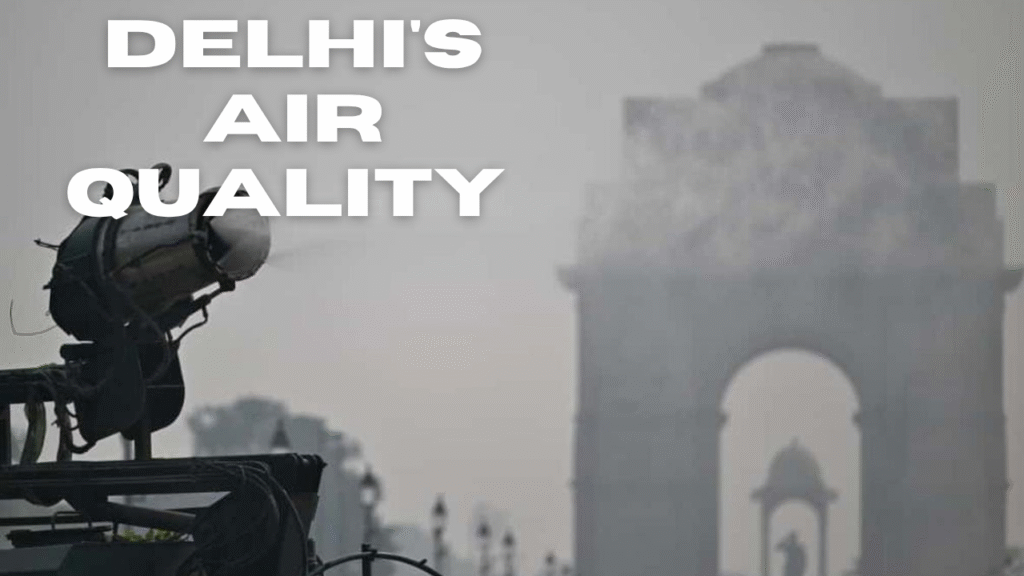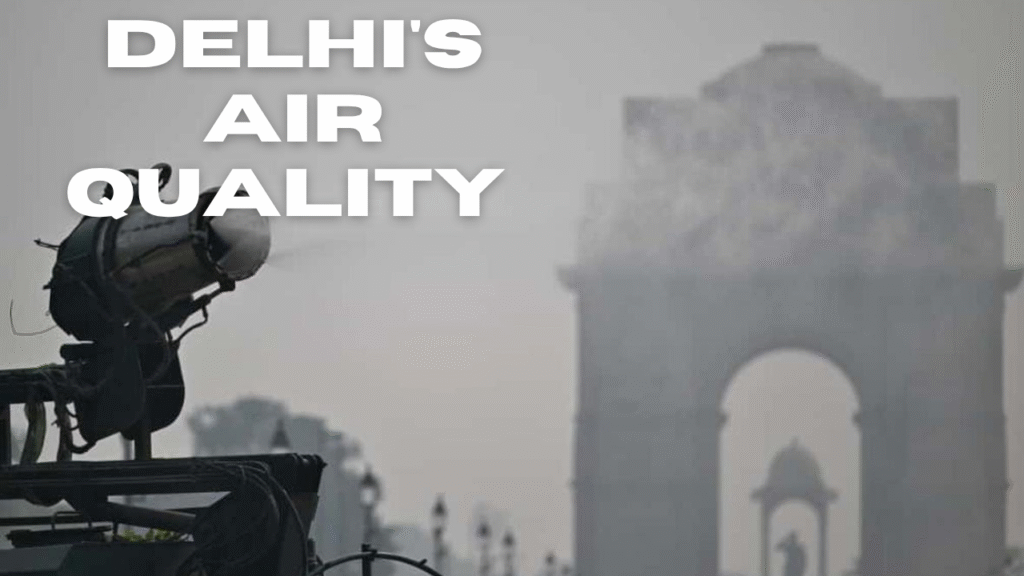air quality in Delhi-NCR plummeted sharply a day after Diwali, with the average AQI soaring to 451 — nearly 1.8 times higher than the national average. The city woke up under a thick layer of smog as pollution levels spiked following the festive night, pushing the air into the ‘severe’ category and making it difficult for residents to breathe easily.


thick blanket of toxic smog engulfed Delhi on Tuesday morning, just a day after Diwali celebrations, as the city choked under the impact of relentless firecracker bursting — many of which violated the Supreme Court’s prescribed time limits. The festive night left behind a heavy trail of smoke and pollutants, pushing the air quality index (AQI) to a staggering 451, nearly 1.8 times higher than the national average, placing it firmly in the ‘severe’ category.However, as the morning progressed and sunlight began to disperse the haze, Delhi’s air quality showed a slight improvement. By 9 AM, the Central Pollution Control Board (CPCB) recorded an AQI of 352, shifting the city’s status to the ‘very poor’ category.While residents woke up to smog-filled skies and the smell of burnt firecrackers, environmental experts warned that such pollution spikes not only harm the environment but also pose serious health risks, especially to children and the elderly. The post-Diwali air crisis continues to serve as a grim reminder of how festive celebrations often come at the cost of the city’s breathable air.On Diwali night, Delhi-NCR’s air quality took a sharp hit, plunging into the ‘very poor’ category. The surrounding satellite cities weren’t spared either, with Noida recording an AQI of 407 and Gurgaon at 402 on Tuesday morning. Several key monitoring stations in the capital reported even worse figures: Wazirpur (435), Dwarka (422), Ashok Vihar (445), and Anand Vihar (440), all falling under the ‘severe’ category.An Air Quality Index (AQI) reading between 0 and 50 is regarded as “good,” 51 to 100 as “satisfactory,” 101 to 200 as “moderate,” Scores ranging from 201 to 300 are considered “poor,” those between 301 and 400 fall under “very poor,” and any score from 401 to 500 is categorized as “severe.”Since 2020, Delhi has maintained a ban on firecrackers during Diwali to curb winter pollution. This year, the Supreme Court permitted the use of green crackers in the Delhi-NCR area from October 18 to 20, restricting them to only two specific time periods: 6–7 AM and 8–10 PM. Despite these guidelines, celebrations went unchecked, with crackers being set off well outside the permitted hours. Experts have warned that even green crackers, especially under adverse weather conditions, can significantly worsen air quality.On the emergency front, the Delhi Fire Services received 269 calls on Diwali night, according to PTI. Thankfully, there were no major accidents or serious injuries reported.
Smoggy conditions are expected to continue in the city
Last week, the Commission for Air Quality Management (CAQM) implemented Stage II of the Graded Response Action Plan (GRAP), which includes measures such as intensified dust control, expanded public transport services, and restrictions on diesel generator use. Daily mechanical road sweeping and water sprinkling have also begun across Delhi-NCR.The weather department predicts that calm winds will allow smog to linger. Tuesday is expected to see partly cloudy skies in several areas during the morning, with temperatures ranging between 31–33°C for the maximum and 20–22°C for the minimum. While the minimum temperature is slightly above normal by 1–3 degrees, the maximum is expected to stay around the seasonal average.
Good information